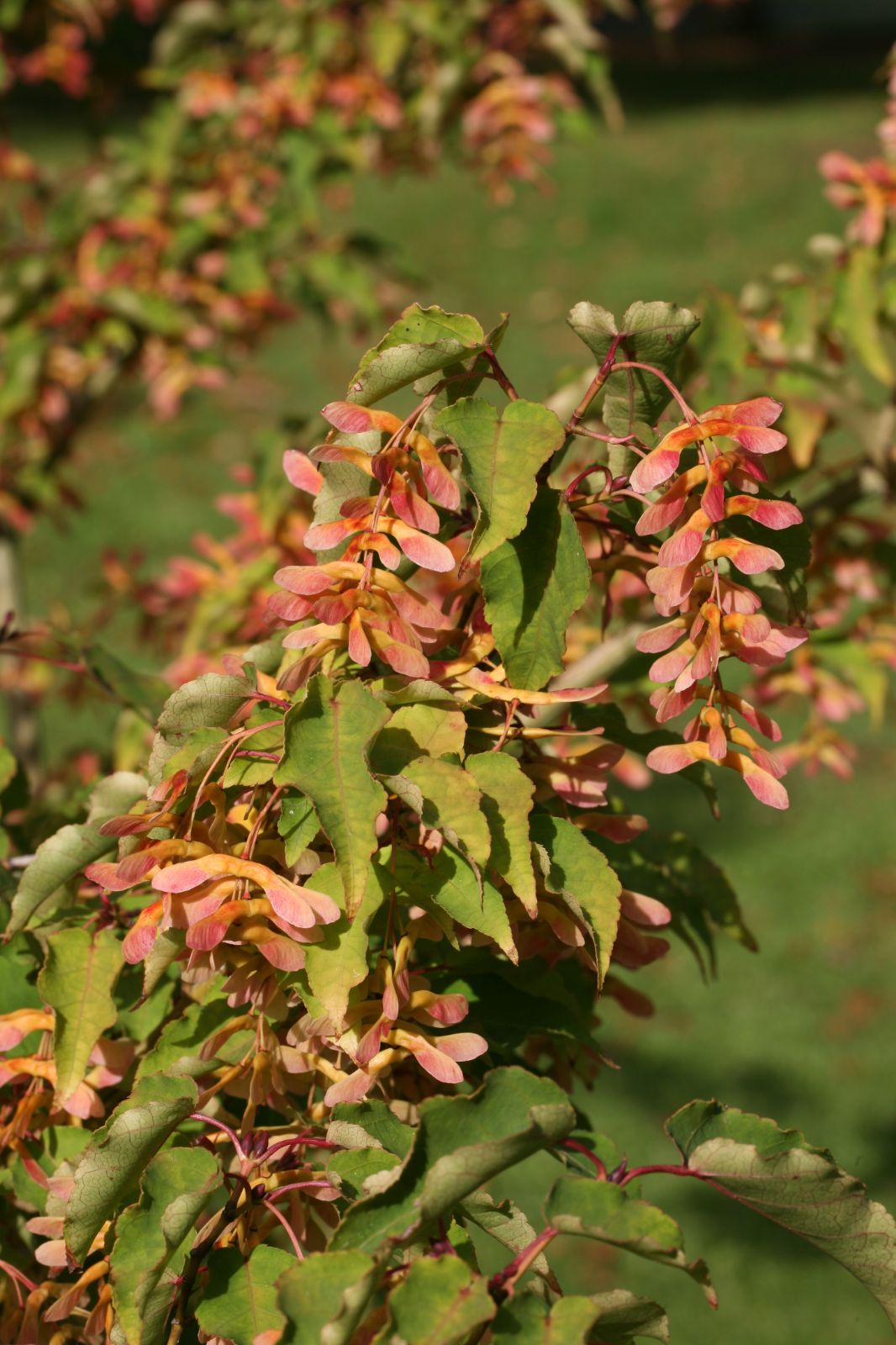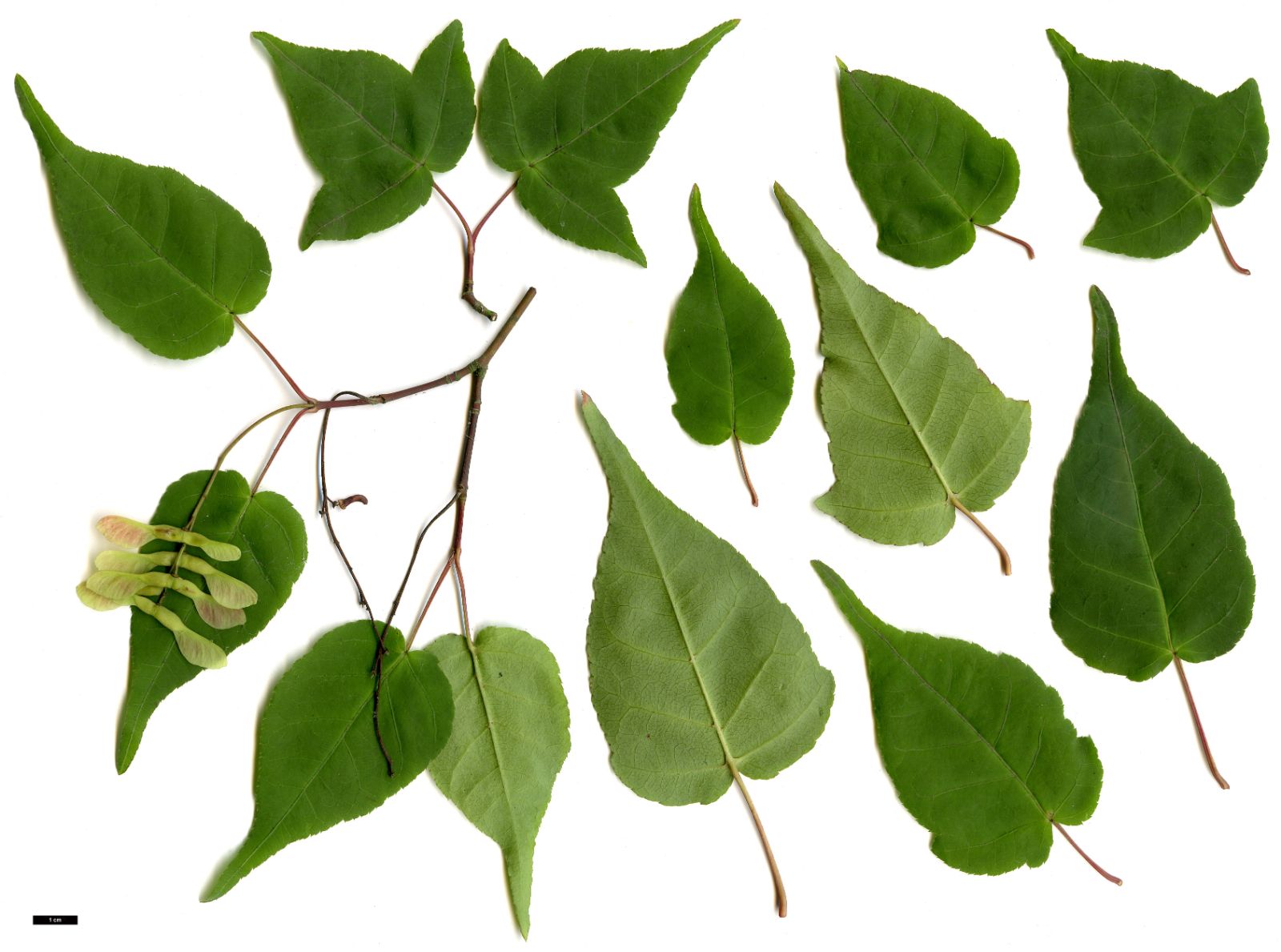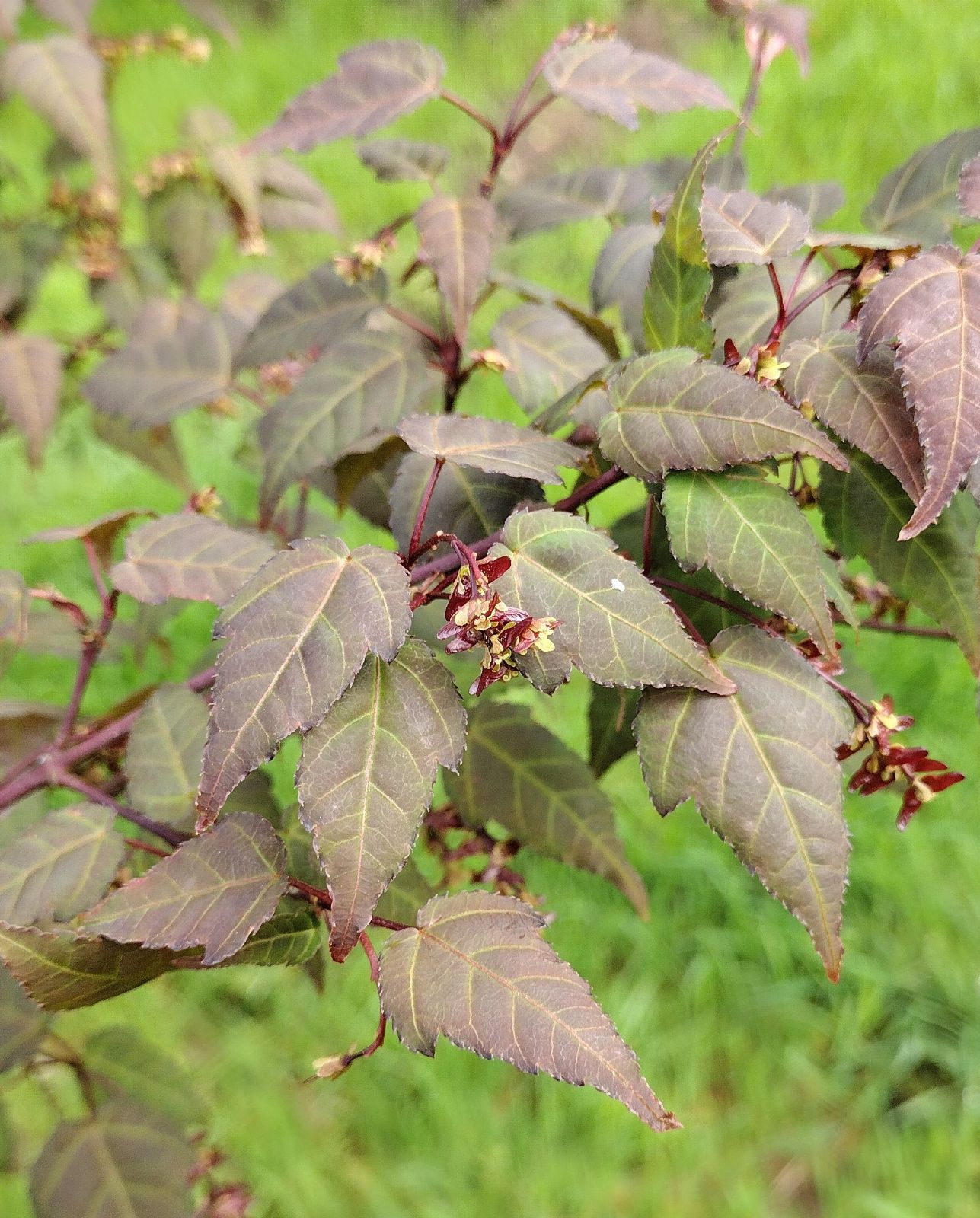Acer crataegifolium
Sponsor
Kindly sponsored by
Lawrence Banks
Credits
Dan Crowley (2020)
Recommended citation
Crowley, D. (2020), 'Acer crataegifolium' from the website Trees and Shrubs Online (treesandshrubsonline.
Genus
- Acer
- Sect. Macrantha
Common Names
- Hawthorn-leaved Maple
- Hawthorn Maple
Synonyms
- Acer crataegifolium var. macrophyllum Hara
Infraspecifics
Other taxa in genus
- Acer acuminatum
- Acer amplum
- Acer argutum
- Acer barbinerve
- Acer buergerianum
- Acer caesium
- Acer calcaratum
- Acer campbellii
- Acer campestre
- Acer 'Candy Stripe'
- Acer capillipes
- Acer cappadocicum
- Acer carpinifolium
- Acer 'Cascade'
- Acer caudatum
- Acer ceriferum
- Acer chapaense
- Acer chienii
- Acer circinatum
- Acer cissifolium
- Acer × conspicuum
- Acer cordatum
- Acer coriaceifolium
- Acer × coriaceum
- Acer davidii
- Acer diabolicum
- Acer distylum
- Acer divergens
- Acer duplicatoserratum
- Acer elegantulum
- Acer erianthum
- Acer 'Esk Flamingo'
- Acer fargesii
- Acer fenzelianum
- Acer flabellatum
- Acer forrestii
- Acer franchetii
- Acer × freemanii
- Acer fulvescens
- Acer 'Gimborn'
- Acer ginnala
- Acer glabrum
- Acer 'Gold Coin'
- Acer granatense
- Acer grandidentatum
- Acer griseum
- Acer heldreichii
- Acer henryi
- Acer × hillieri
- Acer hookeri
- Acer hyrcanum
- Acer japonicum
- Acer kawakamii
- Acer komarovii
- Acer laevigatum
- Acer laurinum
- Acer laxiflorum
- Acer lobelii
- Acer longipes
- Acer macrophyllum
- Acer mandshuricum
- Acer maximowiczianum
- Acer maximowiczii
- Acer metcalfii
- Acer miaotaiense
- Acer micranthum
- Acer 'Mindavi'
- Acer 'Minorient'
- Acer miyabei
- Acer miyabei × campestre
- Acer monspessulanum
- Acer morifolium
- Acer 'Mozart'
- Acer oblongum
- Acer obtusifolium
- Acer okamotoanum
- Acer oliverianum
- Acer opalus
- Acer orientale
- Acer palmatum
- Acer papilio
- Acer pauciflorum
- Acer pectinatum
- Acer pensylvanicum
- Acer pentaphyllum
- Acer pentapotamicum
- Acer pictum
- Acer pilosum
- Acer pinnatinervium
- Acer platanoides
- Acer platanoides × amplum
- Acer platanoides × truncatum
- Acer × pseudoheldreichii
- Acer pseudoplatanus
- Acer pseudosieboldianum
- Acer pubinerve
- Acer pycnanthum
- Acer rubescens
- Acer rubrum
- Acer rufinerve
- Acer saccharinum
- Acer saccharum
- Acer sempervirens
- Acer 'Serpentine'
- Acer serrulatum
- Acer shenkanense
- Acer sieboldianum
- Acer sikkimense
- Acer 'Silver Cardinal'
- Acer 'Silver Ghost'
- Acer sinense
- Acer sinopurpurascens
- Acer spicatum
- Acer stachyophyllum
- Acer taronense
- Acer tataricum
- Acer tegmentosum
- Acer tenellum
- Acer tetramerum
- Acer tibetense
- Acer tonkinense
- Acer triflorum
- Acer truncatum
- Acer tschonoskii
- Acer turkestanicum
- Acer tutcheri
- Acer ukurunduense
- Acer velutinum
- Acer wardii
- Acer 'White Tigress'
- Acer wilsonii
- Acer × zoeschense
A deciduous tree to 7 m in the wild. Bark dark green with pale stripes. Branchlets glabrous, purplish red or greenish, often slightly glaucous, faintly striped white. Buds stipitate, ovoid, with two pairs of valvate scales. Leaves chartaceous, ovate, base cordate to rounded, undivided or shallowly three- (rarely five-) lobed near base, 4–7 × 3–6 cm, rarely larger, apex long acuminate, margins irregularly simple or double-serrate, upper surface dark green, lower surface glaucous, pubescent at first, later glabrous; petiole 1–3 cm long, red to green, grooved; autumn colours yellow to purple. Inflorescence axillary or terminal, racemose, pendulous, 10–15 flowered, 1–3 cm long. Flowers yellowish green, 5-merous, usually dioecious, pedicels 0.4–1 cm long, sepals oblong to oblong-lanceolate, ~0.4 cm long, petals narrowly obovate, ~0.4 cm long, stamens eight, inserted outside the nectar disc. Samaras ~2 cm long, wings spreading nearly horizontally. Nutlets nearly flattened, concave on one side. Flowering April, with unfolding leaves, fruiting October. (Ogata 1999).
Distribution Japan Honshu, Shikoku, Kyushu
Habitat Temperate, deciduous forests, often in open places and along streams between 200 and 1100 m asl.
USDA Hardiness Zone 5
RHS Hardiness Rating H6
Conservation status Least concern (LC)
Taxonomic note Var. macrophyllum is recognised by van Gelderen et al. (1994), who describe it as faster growing than the typical variety, with leaves at least twice as large (and up to 15 cm long!). This variety is not, however, recognised by Ogata (1999), who includes no lower taxa. His treatment is followed here.
Native to the mountains of central and southern Japan, Acer crataegifolium was first introduced to cultivation when C. Maximowicz sent material to St Petersburg in 1862. It was later introduced to Britain by Charles Maries in 1879, whilst collecting on behalf of Veitch Nurseries. The following year Veitch then sent a portion of seed to Charles Sargent at the Arnold Arboretum of Harvard University, introducing it to North America (Jacobson 1996). In the wild, it is one of the earliest woody species to come into leaf and to flower, some time before its associates (Ogata 1999). Sargent (1894) described it as so common in central Japan as to warrant no further mention in his Forest Flora of Japan. Indeed, it is one of several common Japanese maple species that furnish the rich forests of the region. In Nihon University Forest, Gunma Prefecture in 2019, Tony Aiello observed it as one of seven maples species, with A. crataegifolium the sole snakebark among them. The others were A. carpinifolium, A. cissifolium, A. distylum, A. maximowiczianum, A. nipponicum, A. pictum and A. sieboldianum (T. Aiello, pers. comms. 2019).
Its resemblance to Crataegus, hawthorn, in relation to its specific epithet, is weak at best. It is also unlikely to be confused, in its typical form, with other members of Section Macrantha. Its unlobed leaves are most similar to those of typical Acer laxiflorum and, to a lesser degree, A. caudatifolium. Smaller leaves and obtuse tips help distinguish it from these species. In growth it is considered somewhat weak (le Hardÿ de Beaulieu 2003), though like many maple species it can be vigorous in youth. At Hergest Croft it has been found to thrive only when planted in relatively deep shade (W.L. Banks pers. comm. 2020). Its foliage flushes shades of purple, turning to green then to shades of either yellow or dark red in autumn, although it is relatively unspectacular in this regard. It may be at its most ornamental in summer, when its red-fruited racemes contrast well with the summer foliage. Siting in partial shade is advised.
The species’ relative lack of synonyms, something of a novelty in Section Macrantha, is indicative of its relative distinctness. It is represented by numerous recent introductions from different parts of its native range in arboreta throughout our area. Plants with somewhat larger leaves are found in collections, including at Arboretum Wespelaar, and care should be taken not to rush to any hasty determinations without proper examination of several leaves when distinguishing between this and related species.
'Meuri ko fuba'
RHS Hardiness Rating: H6
An unstable, variegated clone, ‘Meuri ko fuba’ is different from ‘Veitchii’ in its larger, darker green leaves, blotched white, turning pink in autumn (van Gelderen et al.1994). It may also be entirely absent of variegation. A shrubby plant, it ultimately reaches up to 4 m tall (Vertrees & Gregory 2009).
'Veitchii'
Synonyms / alternative names
Acer crataegifolium ‘Albo-variegatum’
Acer crataegifolium ‘Fueri-kouri-kaede’
Acer crataegifolium ‘Variegatum’
RHS Hardiness Rating: H6
Described in 1881 by George Nicholson (van Gelderen & van Gelderen 1999) and reported by van Gelderen et al. (1994) to be a densely branched shrub, this selection will form a small, vase shaped tree. Its leaves, with pink and white variegation, are somewhat small for the species. It turns good shades of pink and purple in autumn (Edwards & Marshall 2019). The UK and Ireland champion, measuring 6 m tall in 2015, grows in the Valley Gardens, Windsor Great Park (The Tree Register 2019). It has some tendency to revert, and such growth should therefore be removed if observed (van Gelderen & van Gelderen 1999). Plants grown as ‘Hillieri’ are suggested to be identical to this selection (van Gelderen et al. 1994). ‘Albo-variegatum’, ‘Fueri-kouri-kaede’ and ‘Variegatum’ are also considered synonymous with ‘Veitchii’.
This cultivar should not be confused with Acer veitchii Schwerin, treated as A.× veitchii by Bean (1976a). A disputed taxon, it is discussed within the account of A. davidii under the cultivar of that species, ‘Ernest Wilson’.










